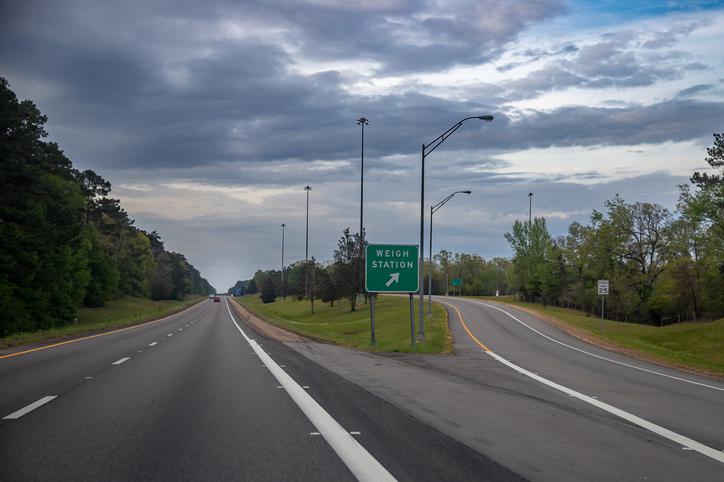We are stuck at a red light waiting for it to turn. For a short distance on the west side of San Francisco, just south of the Golden Gate Bridge, California Highway 1 ends and turns into busy 19th Avenue. This is my least favorite part of driving to the coastal areas north of the city. It's always busy, and the lanes are narrow.
"I had to get up next to you so I could take a picture! What is it? It's just so happy! I love it so much!"
The woman in the car next to us trying to get our attention isn't talking about our long-term 2020 Kia Telluride. She's talking about the ultra-cool, super-cute, vintage-looking travel trailer we have hitched behind us.
The travel trailer, a Mammoth White HC1, is built by Los Angeles-based Happier Camper, and like the women in the car suggested, it's so cute!
Regardless of spec, the Telluride has a max tow rating of 5,000 pounds. This makes the Telluride slightly unusual but not unheard of in the three-row SUV market. Most of the Telluride's main competitors, such as the Subaru Ascent, Toyota Highlander, Honda Pilot, and Ford Explorer, can tow 5,000 pounds, in some cases even more, with the Explorer rated at 5,600 pounds in 3.0L V-6 4WD spec. On the other end of the spectrum—the low end—is the Chevrolet Traverse, which lists its towing rating at a mere 1,500 pounds (unless you choose the AWD High Country trim, which can tow a segment-comparable 5,000 lbs).
Just because you can tow 5,000 pounds, though, doesn't mean you should. Any time you get close to a vehicle's limits, whether it be payload or towing capability, you run a greater risk of it adversely affecting the performance and safety. Also, in the case of the Telluride, there are other things to consider. One issue that caused a little bit of a headache early in our adventure is that the Telluride is only equipped with a four-pin connector for the trailer electronics, instead of the more robust, round, seven-blade connector. Although the four-pin connector makes sure that all of your lights work correctly, that's all it gives you. There's no trailer brake connection or direct power going to your trailer to charge the onboard batteries. Small, lightweight trailers aren't that big a deal, but I would never tow anything of substantial size without trailer brakes.
It turns out I'm not the only one unhappy with the lack of a full seven-blade connector on the 2020 Telluride. A quick scroll through a Kia Telluride online forum reveals that people have had to turn to aftermarket conversion plugs and trailer brake controllers. Kia itself apparently had a seven-blade connector in mind for the 2020 models when designing the tow hitch, as once you unbolt the four-pin connector, the mounting spot is actually designed for the larger seven-blade connector to fit. In fact, for the 2021 model year, all Tellurides equipped with the tow package will indeed have the larger seven-blade connector.
Luckily for us, the pint-sized HC1 is light, real light, 1,100 pounds dry-weight light. Even fully loaded the HC1 weighs in less than 2,000 pounds, meaning it can be towed with darn near anything. It also means the lack of trailer brakes was not an issue. Also, luckily, the HC1 was equipped with a slick solar setup that allowed us to charge the trailer batteries during the daylight hours. Even when parked in a shaded forest campground, the solar panels offered enough juice to keep batteries charged, which meant we were able to use the interior lights and keep the small drawer-mounted refrigerator running. This made the lack of power from the Telluride less of an issue, but 2021 Telluride owners with the standard seven-blade connector will definitely have upgraded convenience when towing.
We ended up driving 1,297 miles during our adventure north. Over those 1,300 miles, we averaged 16.7 mpg, which I feel is pretty decent considering that's only about 4 mpg less than an average fill-up. Overall the Telluride handled the light load well. Performance was not hindered too much, and the Telluride's good outward visibility made parking and backing up the trailer a breeze. The HC1 is short, only 13 feet long overall, and features large front and rear windows that matched up perfectly with the rear window of the Telluride, so I had some (obscured) visibility all the way to the traffic behind us. I've towed enough trailers to know how much of a luxury that was.
We decided to not fill the onboard freshwater tank, and other than food and bed linens we kept the HC1 fairly empty during our trip. In the end, this may have been to our detriment, as the super-light trailer ended up reacting to bumps and pavement imperfections more, resulting in some instances of bucking and bouncing, plus a good deal of noise from the shifting weight on the ball of the hitch. Fully loaded, this problem might be reduced, but honestly the HC1 is so cool and accessible that even if it didn't go away completely, it would be a worthwhile trade-off considering the light weight and the ability to tow it with almost anything.
In the end, our trip was a much-needed escape from our repetitive lives. The Telluride handled the trailer with ease and was a comfortable road trip vehicle. The HC1 was amazing, and anyone interested in a small travel trailer should consider one.
Looks good! More details?Share on FacebookShare on Twitter

